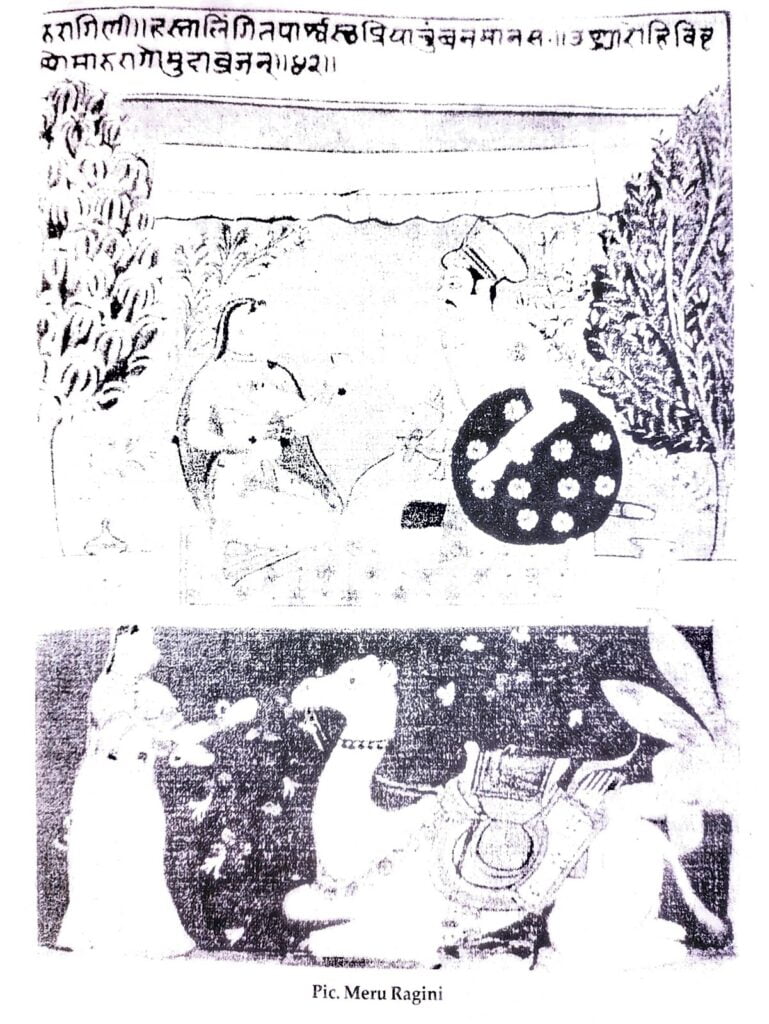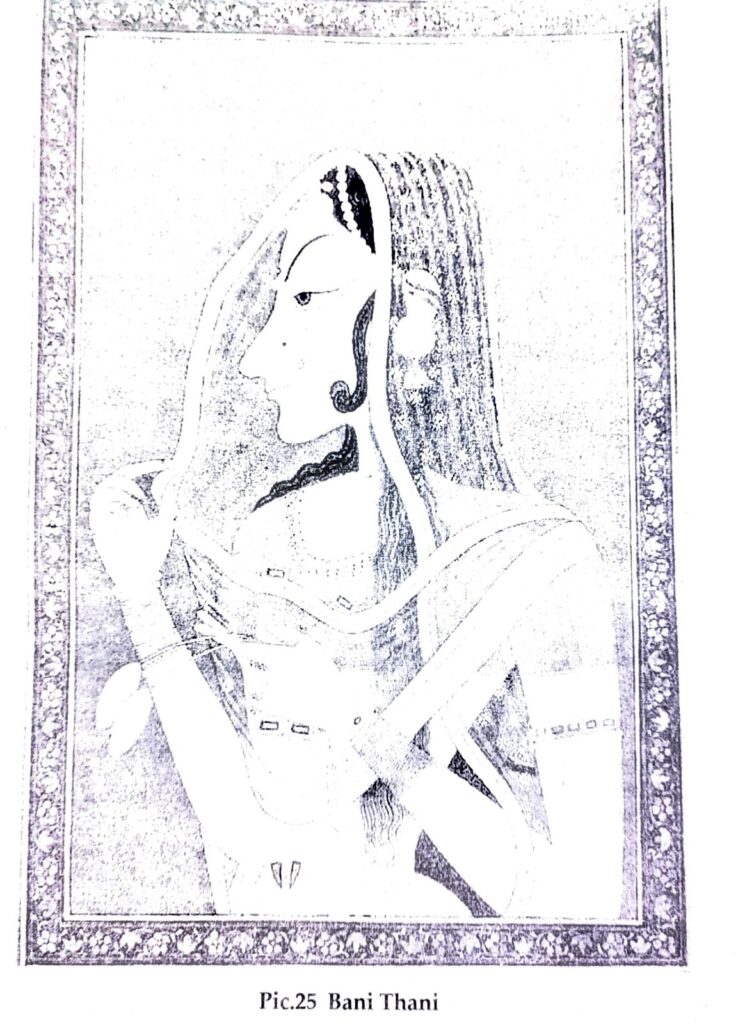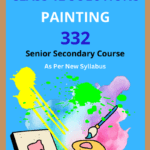NIOS Class 12 Painting Chapter 8 Rajasthani School of Painting Solutions to each chapter is provided in the list so that you can easily browse throughout different chapters NIOS Class 12 Painting Chapter 8 Rajasthani School of Painting and select need one. NIOS Class 12 Painting Chapter 8 Rajasthani School of Painting Question Answers Download PDF. NIOS Study Material of Class 12 Painting Notes Paper 332.
NIOS Class 12 Painting Chapter 8 Rajasthani School of Painting
Also, you can read the NIOS book online in these sections Solutions by Expert Teachers as per National Institute of Open Schooling (NIOS) Book guidelines. These solutions are part of NIOS All Subject Solutions. Here we have given NIOS Class 12 Painting Chapter 8 Rajasthani School of Painting, NIOS Senior Secondary Course Painting Solutions for All Chapter, You can practice these here.
Rajasthani School of Painting
Chapter: 8
PAINTING
Characteristic features
There is a lot of variety in the style of Rajasthani School in handling the natural scene, architectural structure and human figures.
Faces are generally presented in profile. Both the male and female figures show suppleness and emotion in their large eyes. The influence of the Mughal court is easily seen in the dress and costumes. Same influence can be noticed in the drawings of buildings and places in these paintings during the later period.
Meru Ragini
| Title | Meru Ragini or Maru Ragini |
| Medium | Tempera on hand made paper |
| Date | Circa 1650 A.D |
| Size | 6″×8″ |
| Theme | Story of Dhola Maru |
| Artist | Sahibdin |
| Collection | National Museum, New Delhi |
The love Story of Dhola Maru is very popular in Rajasthan and is illustrated both in Murals and miniature paintings.
The composition of this painting is divided into two parts. Dhola and Maru are shown seated under a yellow canopy with a red curtain in the upper part of the composition. Dhola is dressed in typical aristocratic attire complete with weapons like sword and shield, facing his lover Maru wearing Rajasthani costume. The lower part of the composition shows Maru caressing her pet camel. Both the figures are prominent against a green background dotted with flower motifs. Stylised motifs of three trees are bringing a unity in the painting.
Radha and Krishna Offering Betel Leaf to Each other
| Title | Radha and Krishna |
| Medium | Tempera on hand made paper |
| Date | Between 1735 A.D. to 1750 A.D |
| Size | 42x25cm |
| Theme | Paan Mehfil |
| Artist | Nihalchand |
| Collection | National Museum, New Delhi |
Radha and Krishna are dancing on a bed covered with a white sheet and offering paan (betel) to each other. They are attended by maid servants or Gopinis. There are some musicians to entertain them.

The painting is made in traditional Kishangarh style, which can be noticed in the drawing of the eyes, nose and costume. The painting is one of the master pieces by famous painter Nihalchand. The colourful dresses of the figures are admirably set off by the chalky whiteness of the buildings in the background beyond the vast panoramas of the lake. The suggestion of hills and jungles in the foreground gives a sense of depth in the space.
Meeting of Rama and Bharata at Chitrakoot
| Title | Bharat Milap |
| Medium | Tempera on hand made paper |
| Date | 1740 A.D |
| Size | Jaipur School |
| Style | Rama meets Bharata at Chitrakoot |
| Artist | Guman |
| Collection | National Museum, New Delhi |
This one is a very famous episode of Ramayana, largely known as ‘Bharat-milap’ The painting shows the emotional moment when Bharat, the younger brother of Rama is trying to take him back home. The whole incident is taking place at the jungle of Chitrakoot where Rama spent few days. The artist has created an appreciable atmosphere of hermitage with a small hut and different kinds of plants and trees. The serenity and simplicity of the landscape adds to the mood of the painting.
Bani Thani of Kishangarh school (Pic. 25)
| Title | Bani Thani |
| Medium | Tempera on hand made paper |
| Date | 1750 A.D |
| Size | 19x25cm |
| Style | Kishangarh school |
| Artist | Nihal Chand |
| Collection | National Museum, New Delhi |
This painting by Nihalchand of Kishangarh of Rajasthani School has a special place in the collection of Indian miniature painting. The style is characterized by emphatic lengthening of the eyes and nose. Faces are made in profile with a very stylized eye brow and smile on the lips. The painter was inspired by the poem of Raja Sawant Singh, who describes the beauty of a woman called “Bani Thani” in his poem. The beauty of this woman is symbolically used to portray the beauty of Sri Radha. As a great painter Nichalchand could go beyond the mudane to the spiritual in this portrait. The smile of Bani Thani is drawn parallel with the smile of Mona Lisa.
Intext Questions 8.1
Choose the right answer:
1. The story of Dhola-Maru is popular in
(a) Bengal.
(b) Punjab.
(c) Bihar.
(d) Rajasthan.
Ans: (d) Rajasthan.
2. The date of this painting is
(a) 1880 A.D
(b) 1710 A.D
(c) 1650 A.D
Ans: (c) 1650 A.D
3. The composition of this painting is divided in
(a) Two parts.
(b) Three parts.
(c) Fours parts.
Ans: (a) Two parts.
Intext Questions 8.2
Fill up the blanks:
1. The painting is rendered in ________ style.
Ans: Kishangarh style.
2. This is a masterpiece by famous painter ________.
Ans: Nihalchand.
3. The theme of the painting ________.
Ans: Radha and Krishna are offering paan to each other.

Intext Questions 8.3
Fill up the blanks:
1. The date of this painting is __________.
Ans: 1740 A.D.
2. The painting belongs to __________ school.
Ans: Jaipur.
3. This painting is painted by __________.
Ans: Guman.
Intext Questions 8.4
Fill up the blanks:
1. The date of the painting Bani Thani is __________.
Ans: 1750 A.D.
2. The artist of this painting is __________ school.
Ans: Nihalchand.
3. This painting is painted in style.
Ans: Kishangarh style.
Model Questions
1. Mention the themes of Rajasthani painting.
Ans: Themes of these painting are mainly Puranic or Epic. Krishna-Leela is the most popular theme along with some stories of the Mahabharata and Ramayana. Folk lore of Rajasthan like Dhola-Maru and Roopmati and Baajbahadur are also illustrated in these paintings.
2. Name the important centres of Rajasthani paintings.
Ans: Rajasthani painting can be divided in four groups as Rajasthani School, Bundelkhand School, Pahari School and Sikh School. There are many centres in these regions, which are famous for these miniature painting. Some of these centres are, Jaipur, Mewar, Malwa, Nathdwara, Udaipur, Jodhpur, Bikaner, Kota, Bundi, Kishangarh etc.
3. Describe the painting on the story of Dhola-Maru.
Ans: The love Story of Dhola Maru is very popular in Rajasthan and is narrated both in Murals and miniature paintings.
The composition of this painting is divided into two parts. Dhola and Maru are shown seated under a yellow canopy with a red curtain in the upper part of the composition. Dhola is dressed in typical aristocratic attire complete with weapons like sword and shield, facing his lover Maru in Rajasthani costume. The lower part of the composition shows Maru caressing her pet camel. Both the figures are prominent against a green background dotted with flower motifs. Stylised motifs of three trees are bringing a unity in the composition.
4. Describe the characteristics features of the painting “Bani-Thani”.
Ans: This painting by Nihalchand of Kishangarh of Rajasthani School has a special place in the treasure of Indian miniature painting. The style is characterized by emphatic lengthening of the eyes and nose. Faces are mostly in profile with a very stylized eye brow and smile on the lips. The painter was inspired by the poem of Raja Sawant Singh, who describes the beauty of a lady called “Bani Thani” in his poem. The beauty of this woman is symbolically used to describe the beauty of Sri Radha. As a master painter Nichalchand could go beyond the mundane to the spiritual in this portrait. The smile of Bani Thani is often compared with the smile of Mona Lisa.
Very Short Type Questions Answer
1. When did Rajasthani painting flourish?
Ans: From 16th C.A.D to 19 C.A.D.
2. Which is the most popular theme among Puranic or Epic theme?
Ans: Krishna-Leela is the most popular theme along with some stories of the Mahabharata and Ramayana.
3. Which folk lores are illustrated in Rajasthani painting?
Ans: Folk lore of Rajasthan like Dhola-Maru and Roopmati and Baajbahadur are illustrated in Rajasthani paintings.
4. What is dress of Dhola?
Ans: Dhola is dressed in typical aristocratic attire complete with weapons like sword and shield.
5. Who painted Meru Ragini?
Ans: Sahibdin.
6. What is medium of the painting Meru Ragini or Maru Ragini?
Ans: Tempera or hand made paper.
7. What is the style of Radha and Krishna painting?
Ans: Kishangarh style.
8. Who painted on theme “Radha and Krishna offering betel leaf to each other?
Ans: Nihalchand.
9. Who painted Bharat-Milap’?
Ans: Guman.
10. What is the medium of Bharat Milap?
Ans: Tempera on hand made paper.
11. What was the inspiration behind “Bani-Thani” painting?
Ans: The painter was inspired by the poem of Raja Sawant Singh, who described the beauty of a lady called “Bani-Thani” in his poem.
12. Who painted “Bani Thani”?
Ans: Nichalchand.
13. With whom is the smile of Bani-Thani compared?
Ans: The smile of Bani-Thani is often compared with the smile of Mona Lisa.
14. Which character does Bani Thani painting symbolically describe?
Ans: Bani-Thani painting symbolically describes the beauty of Sri Radha.
Short Type Questions Answer
1. What are characteristics features of Rajasthani school of painting?
Ans: Themes of these painting are mainly Puranic or Epic. Krishna-Leela is the most popular theme along with some stories of the Mahabharata and Ramayana. Folk lore of Rajasthan like Dhola-Maru and Roopmati and Baajbahadur are also illustrated in these paintings.
2. Describe the painting “Meru Ragini”?
Ans: The love Story of Dhola Maru is very popular in Rajasthan and is narrated both in Murals and miniature paintings.
The composition of this painting is divided into two parts. Dhola and Maru are shown seated under a yellow canopy with a red curtain in the upper part of the composition. Dhola is dressed in typical aristocratic attire complete with weapons like sword and shield, facing his lover Maru in Rajasthani costume. The lower part of the composition shows Maru caressing her pet camel. Both the figures are prominent against a green background dotted with flower motifs. Stylised motifs of three trees are bringing a unity in the composition.
3. Describe the painting “Radha and Krishna”.
Ans: Radha and Krishna are dancing on a bed covered with a white sheet and offering paan (betel) to each other. They are attended by maid servants or Gopinis. There are some musicians to entertain them.
The painting is rendered in traditional Kishangarh style, which is particularly noticeable in the drawing of the eyes, nose and costume. The painting is one of the masterpieces by famous painter Nihalchand. The colorful dresses of the figures are admirably set off by the chalky whiteness of the buildings in the background beyond the vast panoramas of the lake. The suggestion of hills and jungles in the foreground gives a sense of depth in the space.
4. Describe the painting “Bharat Milap”?
Ans: This one is a very popular episode of Ramayana, largely known as ‘Bharat-milap’. The painting depicts the emotional moment when Bharat, the younger brother of Rama is trying to take him back home. The whole incident is taking place at the jungle of Chitrakoot where Rama stayed for few days. The artist has created a perfect atmosphere of hermitage with a small hut and different kinds of plants and trees. The serenity and simplicity of the landscape enhances the mood of the painting.
5. Describe the painting “Bani Thani”?
Ans: This painting by Nihalchand of Kishangarh of Rajasthani School has a special place in the treasure of Indian miniature painting. The style is characterized by emphatic lengthening of the eyes and nose. Faces are mostly in profile with a very stylized eye brow and smile on the lips. The painter was inspired by the poem of Raja Sawant Singh, who describes the beauty of a lady called “Bani Thani” in his poem. The beauty of this woman is symbolically used to describe the beauty of Sri Radha. As a master painter Nichalchand could go beyond the mundane to the spiritual in this portrait. The smile of Bani Thani is often compared with the smile of Mona Lisa.
6. Describe the development of Rajasthani painting.
Ans: Rajasthani painting flourished from the 16th-19th centuries in the areas like Rajwara, Rajasthan, Rajputana etc. The Rajasthani miniature painters assimilated different styles and techniques both from the old school like, Ajanta, Gujrati palm-leaf painting and contemporary styles of Persia, Mughal and even European art. The early Rajasthani painting school like Mewar, Bundi, Malwa, Bikaner, Kishangarh and other small city-states became prolific centres of this styles. Various themes were used by these painter, which included Ramayana, Mahabharata, Geeta-Govindam, life of common people and local love-stories.

Hi! my Name is Parimal Roy. I have completed my Bachelor’s degree in Philosophy (B.A.) from Silapathar General College. Currently, I am working as an HR Manager at Dev Library. It is a website that provides study materials for students from Class 3 to 12, including SCERT and NCERT notes. It also offers resources for BA, B.Com, B.Sc, and Computer Science, along with postgraduate notes. Besides study materials, the website has novels, eBooks, health and finance articles, biographies, quotes, and more.




